These creamy, tender white beans are great for meal prep and quick dinners. Cooking white beans on the stovetop is easy and cost-effective. With just a few basic ingredients and a bit of patience, you’ll have perfectly cooked beans ready to use in soups, salads, and more dishes!
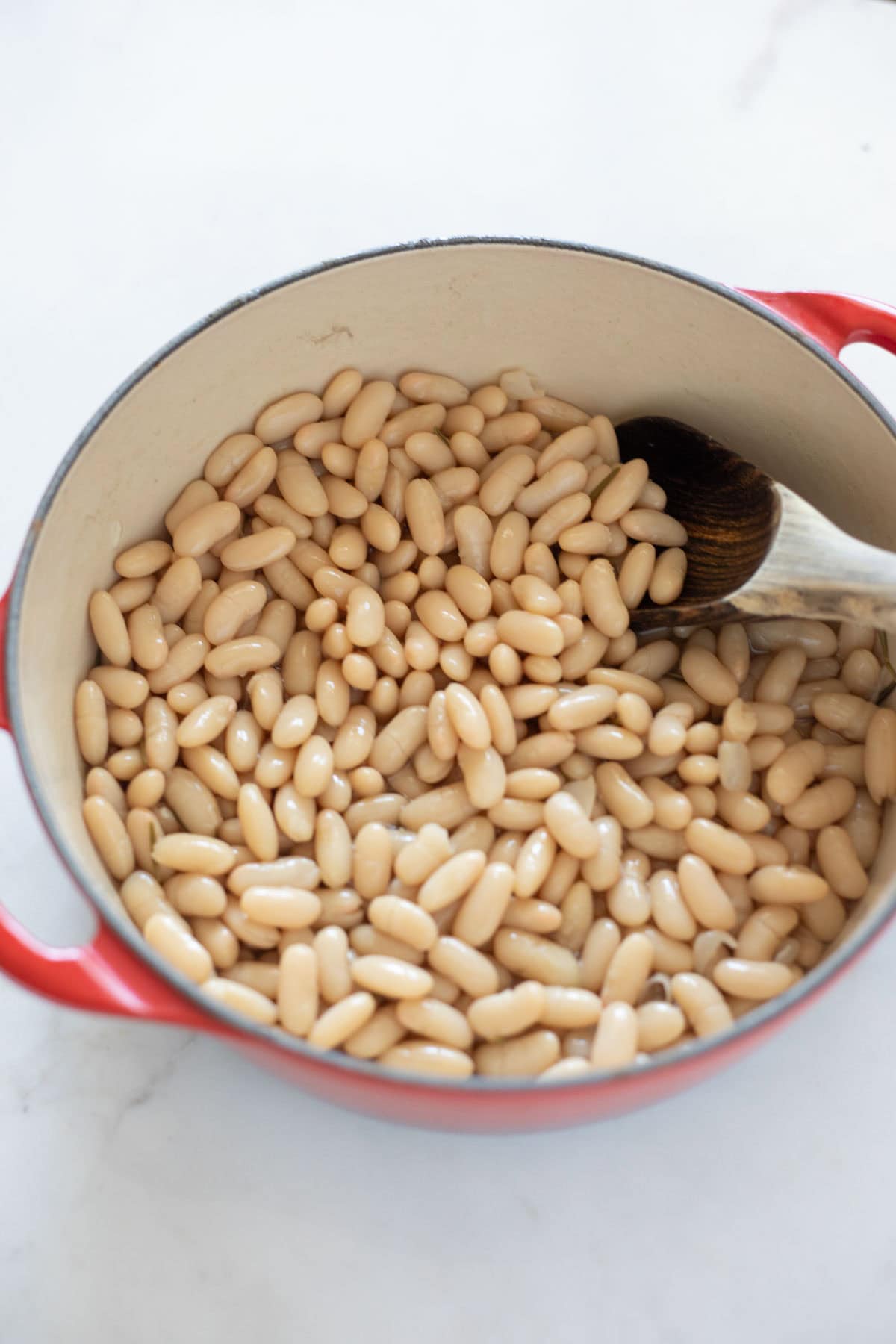
One of the best meal-prep strategies is to cook dry beans and store them in the refrigerator or freezer.
This recipe works with dried white beans, including Navy, Cannellini, and Great Northern beans. I love cooking beans and chickpeas on the stovetop or in the Instant Pot. It takes longer, but it is more economical and tastier than canned beans.
Adding cooked white beans adds protein and makes your pasta, soups, and salads creamy and delicious. For a perfect example, try this flavorful Tuscan White Bean Salad that’s both nutritious and easy to prepare!
Table of Contents
- Watch How to cook White Beans?
- What are White Beans?
- What are the Benefits of White Beans?
- Why are Dried Beans Better than Canned Beans?
- Ingredients
- Do I need to soak Beans?
- Cooking White Beans on Stovetop from Scratch
- Seasoned White Beans
- How to Store Cooked White Beans?
- Pro-Tips
- Recipes Using White Beans
- Frequently Asked Questions
- More Recipes with Beans
- How to Cook White Beans? Recipe
Watch How to cook White Beans?
What are White Beans?
Any bean that is white or off-white in hue is accurately referred to as a “white bean.” White beans sold commercially are usually referred to by more specific names, such as Navy beans, Great Northern, or Cannellini.
Though different white bean varieties have slightly varying flavors and sizes, their nutritional contents are relatively similar, and they can easily be substituted in recipes.
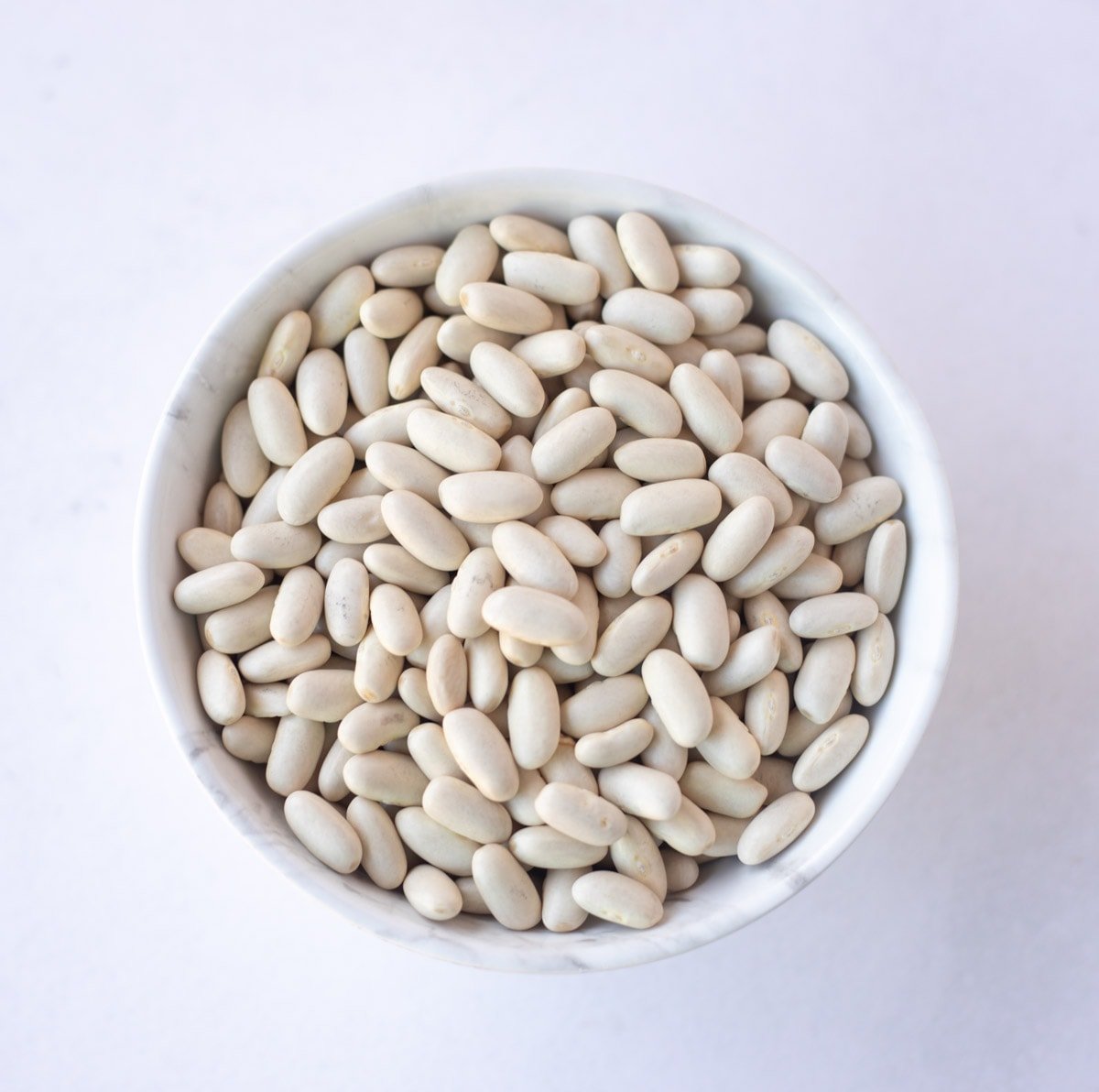
What are the Benefits of White Beans?
White Beans are very nutritious. Some of the benefits of white beans are:
- White beans can be used as one of the key protein sources for vegetarians and vegans.
- They are high in fiber.
- They have a high nutrient density while being relatively low in calories.
Why are Dried Beans Better than Canned Beans?
Home-cooked beans are a better alternative to canned beans:
- They taste better as they are freshly made.
- Dried beans contain more protein, fiber, iron, potassium, and magnesium than canned beans, and they contain less sodium.
- Dried beans are friendly on the pocket as they are much cheaper.
- Cans also have potentially harmful chemicals.
- Reduces the amount of waste generated.
Ingredients
- Dried white beans: 1 cup of dried beans will give you 3 cups of cooked beans. I have used cannellini beans.
- Water or stock: Either one works. Use stock if you want extra flavor in the cooked beans.
- Flavoring Ingredients: For extra flavor, add a bay leaf or a sprig of rosemary. You can also add onion, garlic, and other herbs such as thyme, marjoram, or sage.
- Salt.
Do I need to soak Beans?
This is one question I always get asked when cooking beans.
- Soaking beans overnight is recommended for stovetop cooking. It helps to soften the beans and speed up the cooking process.
- Soaking the beans decreases the phytic acid content and enhances nutrient absorption.
- Also, soaking beans can help reduce gas-causing compounds in the beans, which is beneficial if someone has bloating from beans.
Cooking White Beans on Stovetop from Scratch
Cooking white kidney beans on the stovetop gives you more control over how they turn out. Even though it takes longer than an Instant Pot, this traditional way allows flavors to blend slowly, making the beans taste better and have a nicer texture.
The stovetop method is best for soaking the beans. Start by soaking 1 cup of beans in water overnight. After soaking, drain the beans.
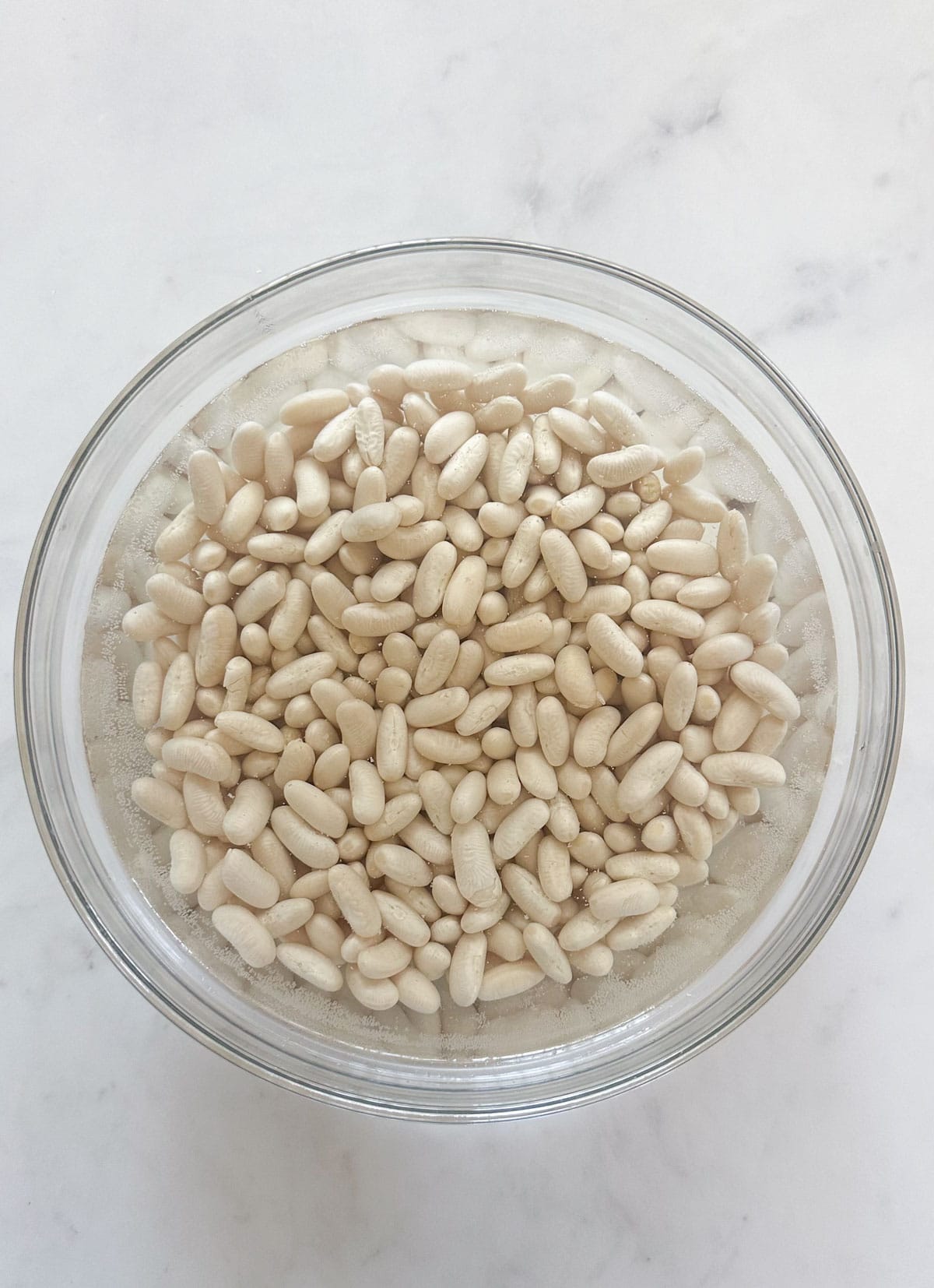
Add the drained beans and fresh water to a large pot or Dutch oven (about 3-4 cups water for 1 cup of beans).
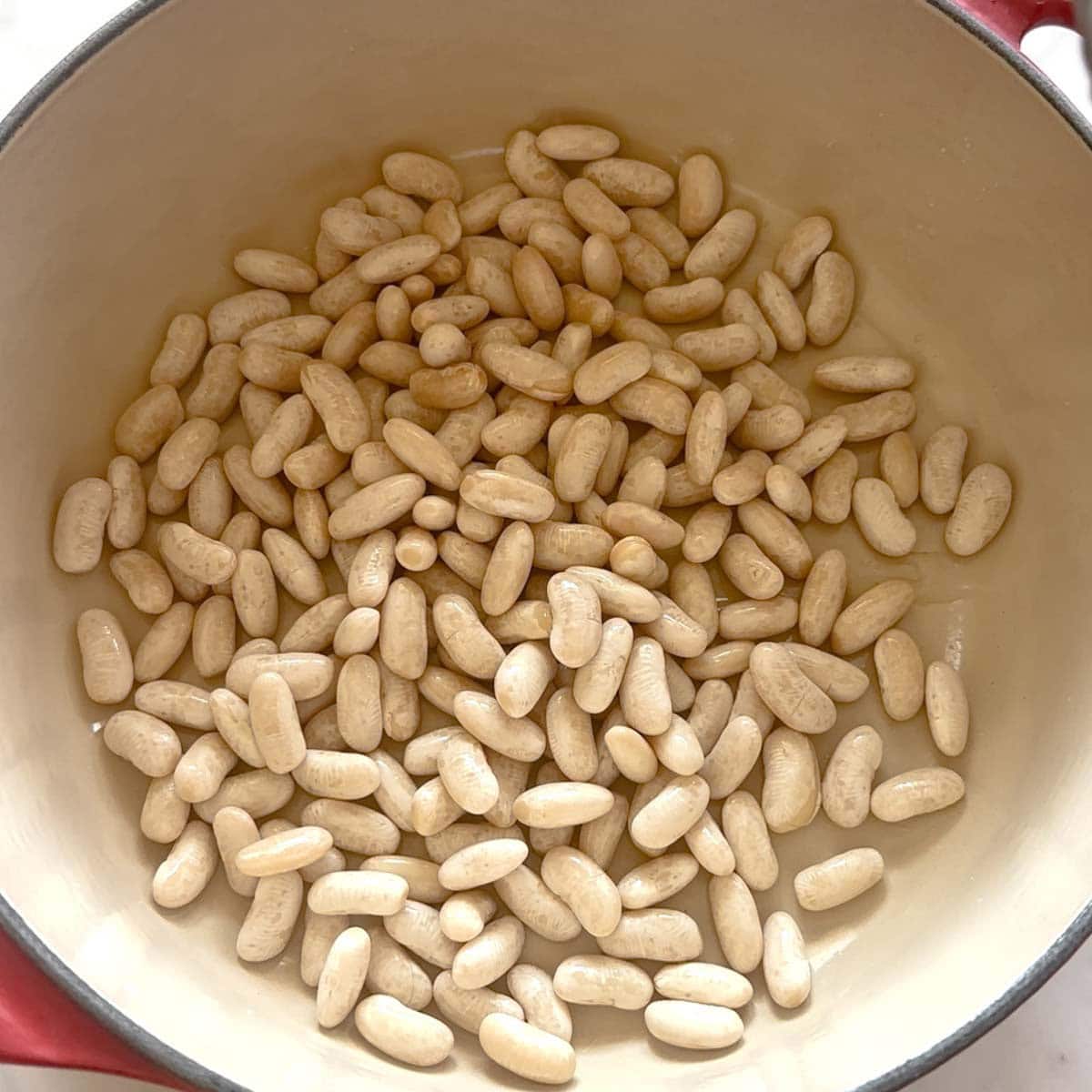
Season the beans with a bit of salt and optionally add a sprig of rosemary and garlic.
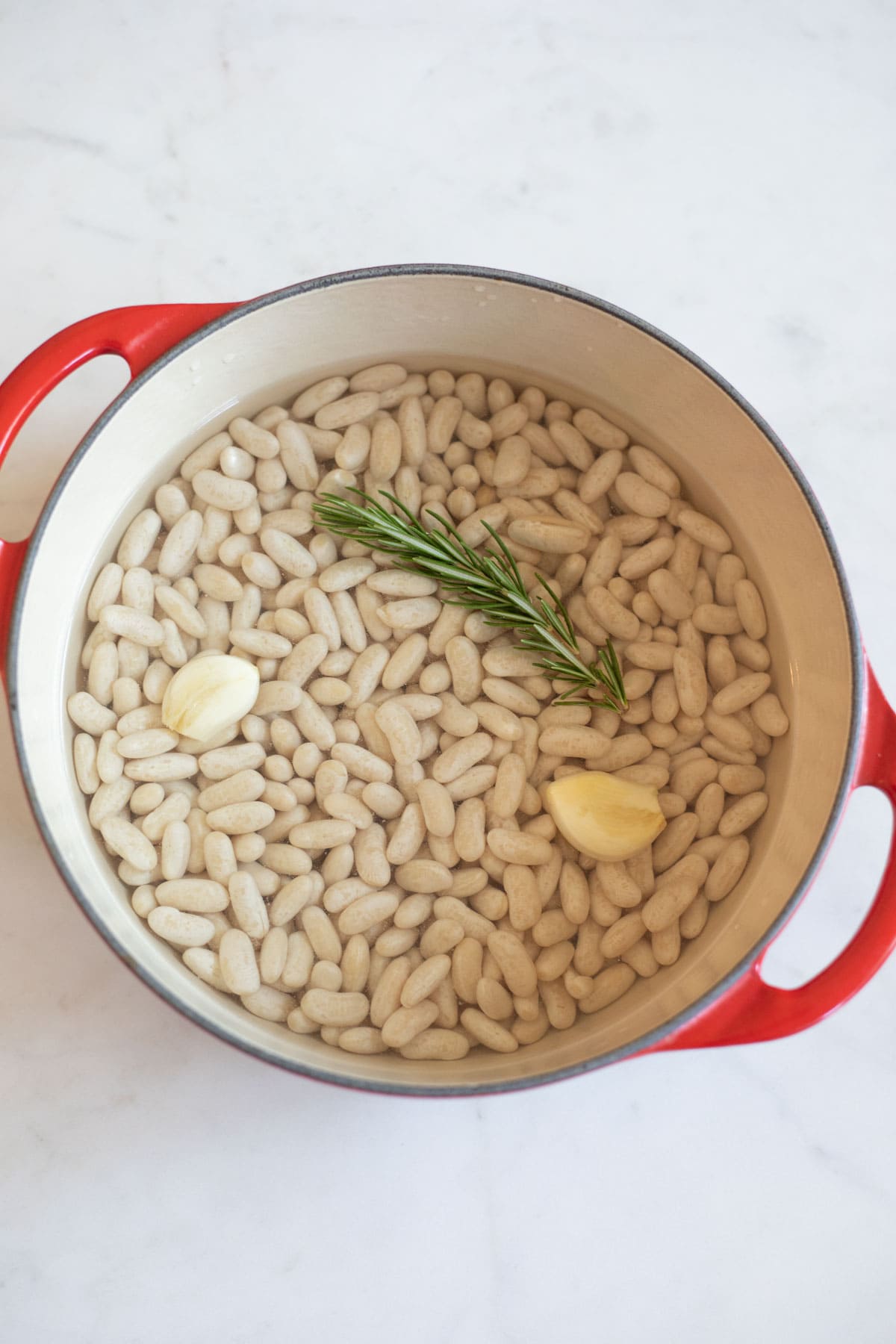
- Bring the water to a boil over high heat. Once it boils, reduce the flame to low.
- Partially cover the pot and let the beans simmer on low heat. Stir occasionally to cook them evenly.
- There will be white foam formed on the top. Skim that with a ladle and discard.
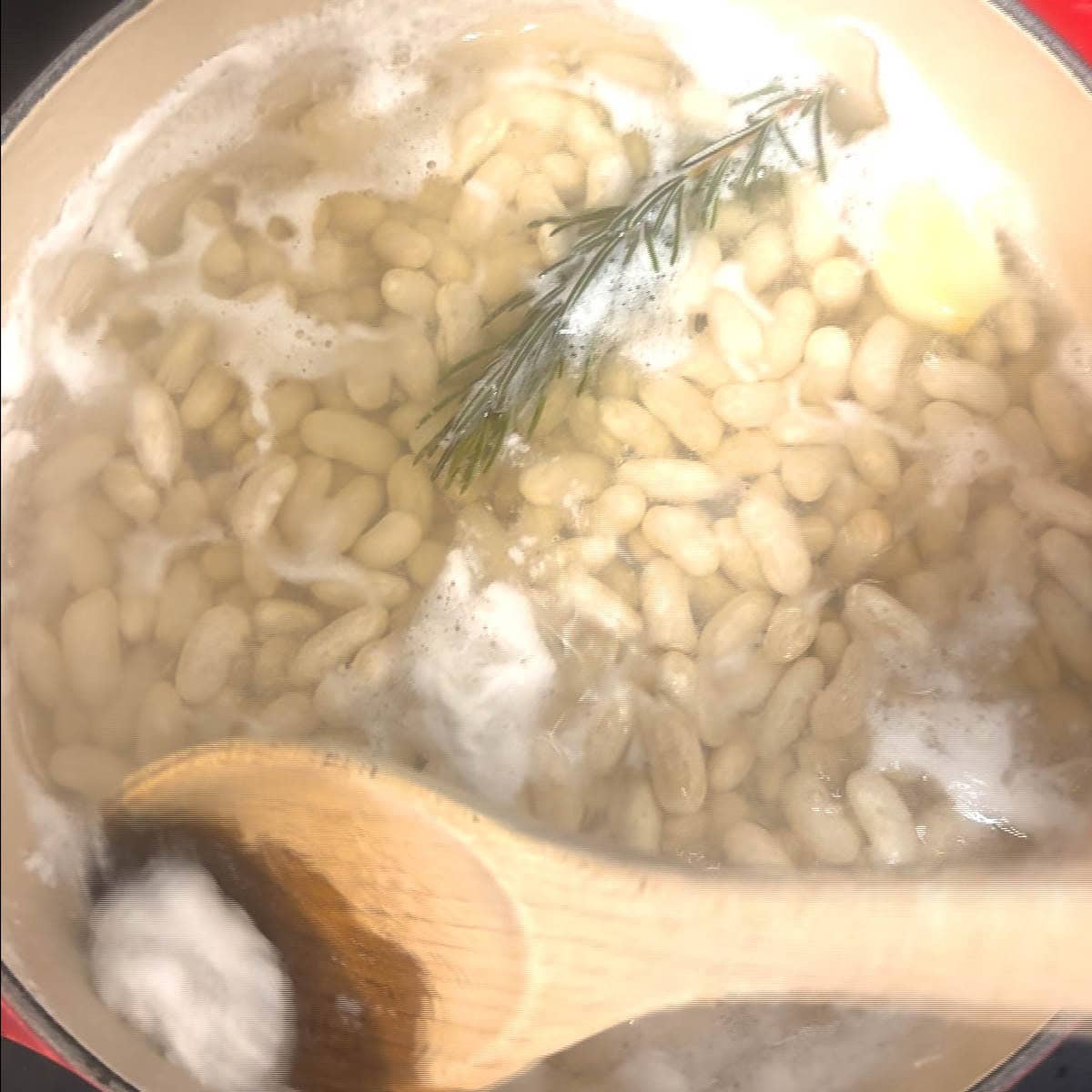
- Cook the beans for about 50 to 60 minutes until they’re tender. They should be soft when you bite into them but not falling apart.
- Taste to check if they’re done. If they’re still too firm, keep simmering and check every 15 minutes until they’re tender. Add more water if the beans are not covered in liquid.
- Once cooked, drain any excess cooking liquid. The cooked cannellini beans can be used in salads or soups.
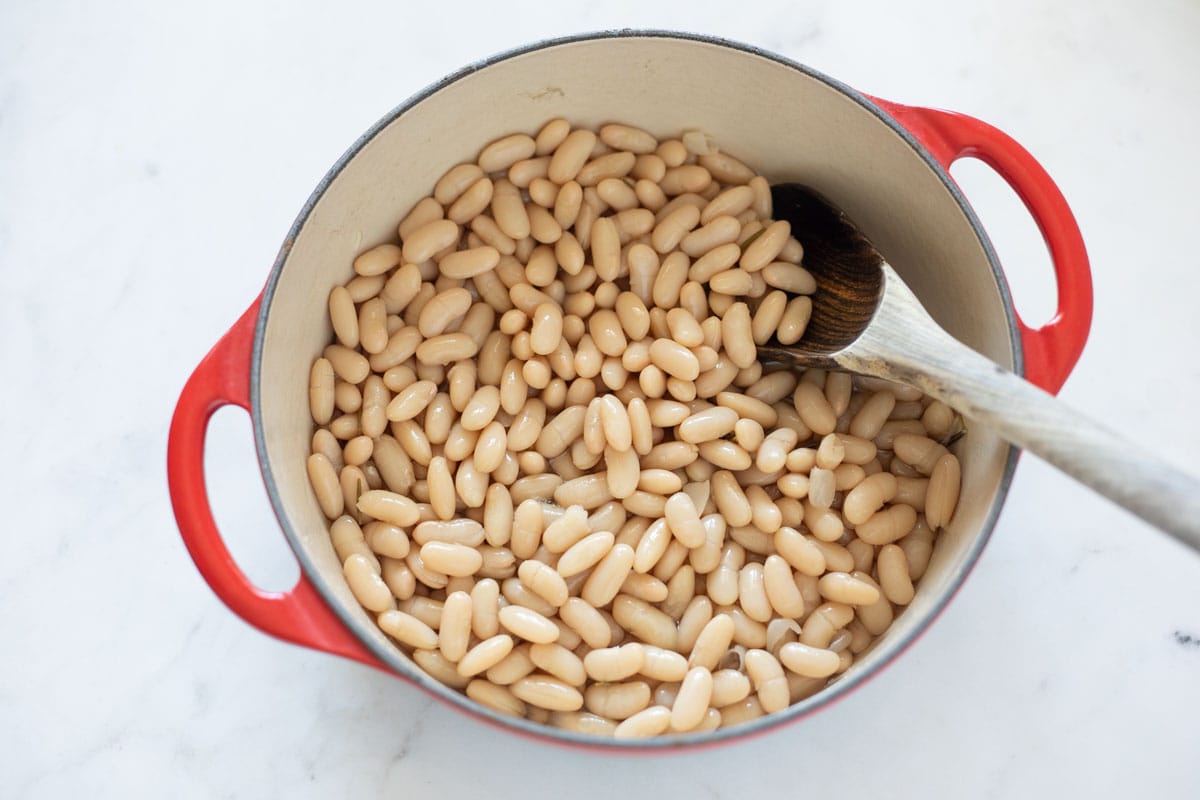
If you prefer cooking white beans using an Instant Pot, check out my recipe for Instant Pot Cannellini Beans.
Seasoned White Beans
- After the soaking, drain the white beans.
- In a large pot, heat olive oil over medium heat. Add diced onions, minced garlic, and sauté until translucent and fragrant, about 5 minutes.
- Add the drained beans to the pot with fresh water or stock. Bring to a boil over high heat.
- Once boiling, reduce heat to low, add the bay leaf, and simmer gently.
- Season with salt to taste. Optionally, add herbs like rosemary, thyme, marjoram, or sage for added flavor.
- Follow the same remaining steps as when cooking white beans from scratch.
- You can serve these seasoned white beans as a side dish.
How to Store Cooked White Beans?
- Cooked beans should be stored in airtight containers or resealable zip-lock bags in the refrigerator.
- When properly stored, they will keep well in the refrigerator for 3 to 5 days.
- Freeze the beans for up to 2 months.
- Bacteria grow quickly at temperatures between 40°F and 140°F, so it is best to refrigerate the beans as soon as they cool down after cooking.
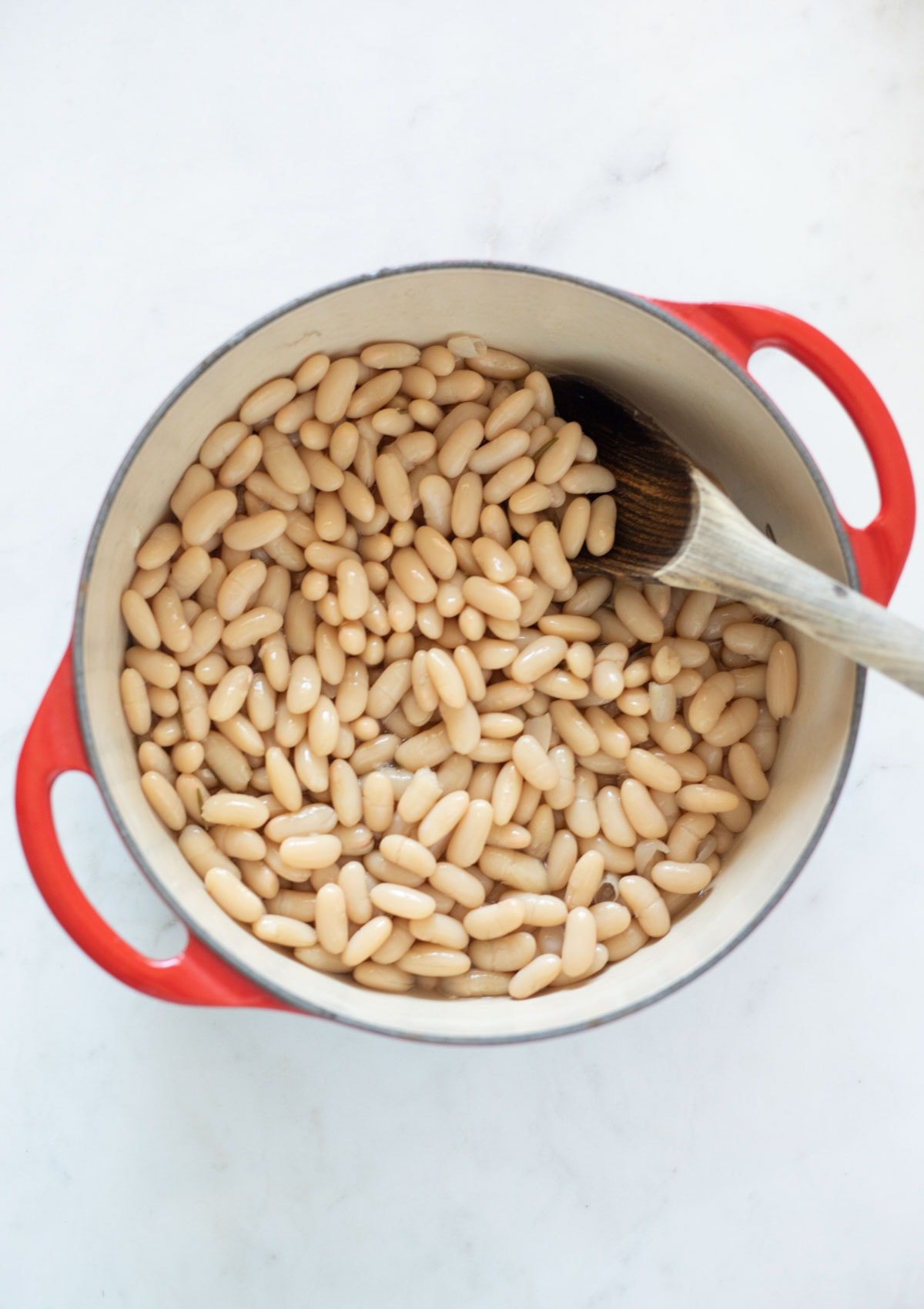
Pro-Tips
- Cleaning the beans: Always wash your beans before using them. When using dried beans, ensure they’re clean before soaking to remove any dirt or discolored beans.
- Soaking the beans: Soak dry beans for six to eight hours or overnight before cooking.
- Don’t overcook: Avoid overcooking your beans unless you’re making a dip or spread. If you boil them too long, the skins will crack, and the beans will lose shape.
- Cooking time varies: Cooking times for dried cannellini beans vary depending on their age. Using hard water or cooking at a higher altitude can also affect how quickly they cook because it lowers the temperature at which water boils.
Recipes Using White Beans
White beans are versatile and can be incorporated into various dishes, including soups, stews, dips, salads, thickening sauces, and more.
- Bean salad: For a quick, refreshing, and protein-packed snack on a hot day, try bean salad.
- White bean soup: A hearty, warm soup can be made with any type of white bean.
- Minestrone soup: This favorite Italian soup with beans, veggies, and pasta is a great way to use all the excellent beans.
- Chilli: You can use any white beans in a white-bean chili.
- Beans with rice: Beans and rice are a great option to enjoy for any meal.
- Bean burger patties: Plant-based burgers with white beans taste delicious.
- Grain bowls: Add these beans to a grain bowl for extra protein, such as a sorghum grain bowl.
Frequently Asked Questions
No, it’s not essential. I don’t think broth is needed because the salt, garlic, bay leaf, etc., give the beans a lot of flavor. In addition, when the beans simmer, the water transforms into a delicious broth.
Yes. The cooked beans can be frozen with or without the liquid in which they were cooked. Cooled leftovers can be stored in the refrigerator for up to 5 days or in the freezer for up to 2 months.
There are a few reasons why your beans can be hard:
Stale/Old: Even dried beans require “freshness” to be tender and flavorful. Dried beans stored for over a year can remain hard and chewy no matter how long they are cooked.
Liquid quantity: Beans should always be immersed in liquid while cooking. Insufficient liquid will prevent them from cooking evenly.
Acidic ingredients: Cooking dried beans with acidic ingredients such as tomatoes, lemon, vinegar, or wine can prevent them from becoming tender.
Hard water: If your tap water is extremely hard, the minerals in the water can prevent the beans from softening. If possible, cook them in filtered or bottled water.
To cook dried beans quickly, use the “quick soak” method instead of waiting overnight. Bring the beans to a boil in a large pot, then let them soak for an hour. Drain the soaked water, then proceed with cooking them. You can also buy fresh beans for faster cooking.
More Recipes with Beans
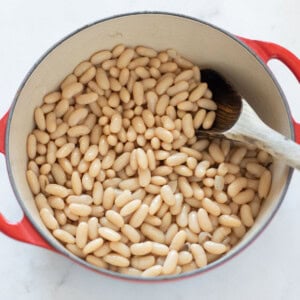
How to Cook White Beans?
Video
Ingredients
Instructions
- Soak the beans in plenty of water overnight or at least 6 hours. This step is required to ensure even cooking and better digestion. Drain any remaining soaking water.
- Add the drained beans and fresh water to a pot or Dutch oven (about 3 cups for 1 cup of beans).
- Season the beans with salt and optionally add a sprig of rosemary and garlic.
- Bring to a boil over high flame, then reduce the flame to low.
- Partially cover the pot and let the beans simmer on low heat. Stir occasionally to cook them evenly.
- There will be white foam formed on the top. Skim that with a ladle and discard.
- This process should take about 50-60 minutes, depending on the type of beans and their age. Beans should be tender but not mushy when done.
- Taste to check if they're done. If they're still too firm, keep simmering and check every 15 minutes until they're tender. Add more water if the beans are not covered in liquid.
- Once the beans are cooked, remove the herb and you can drain any remaining liquid. Enjoy the beans in stews, soups, white chili, or salads.
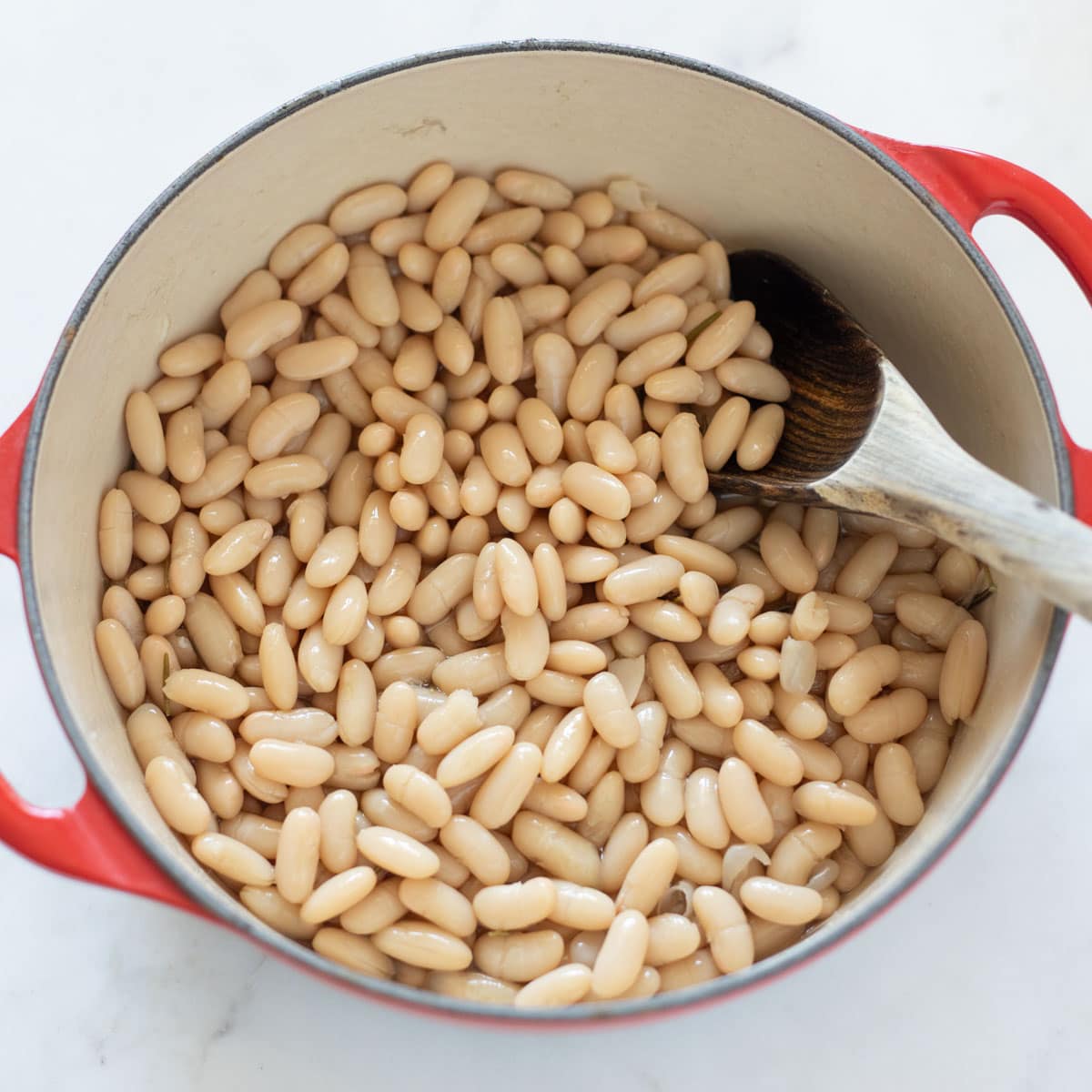
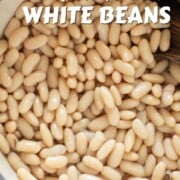
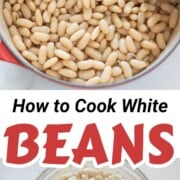
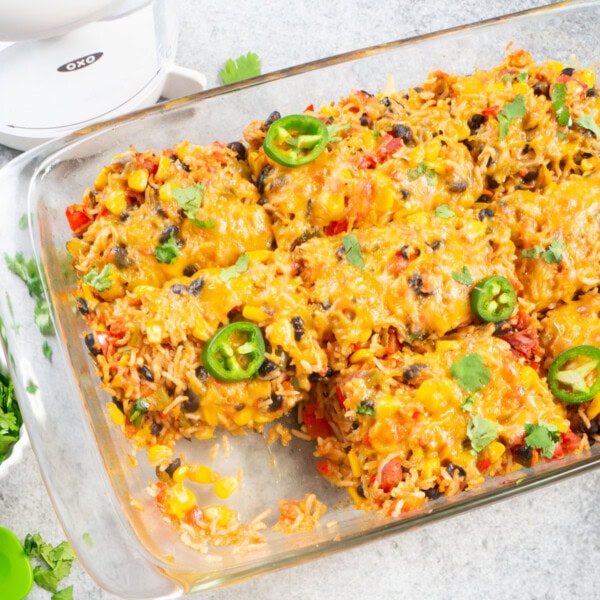
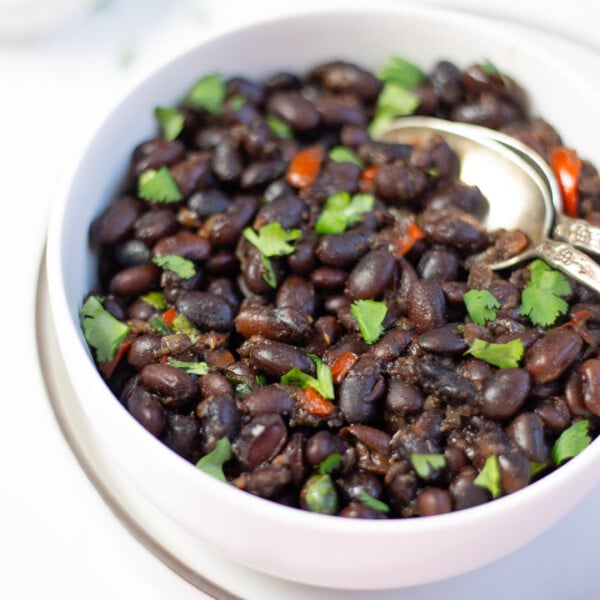
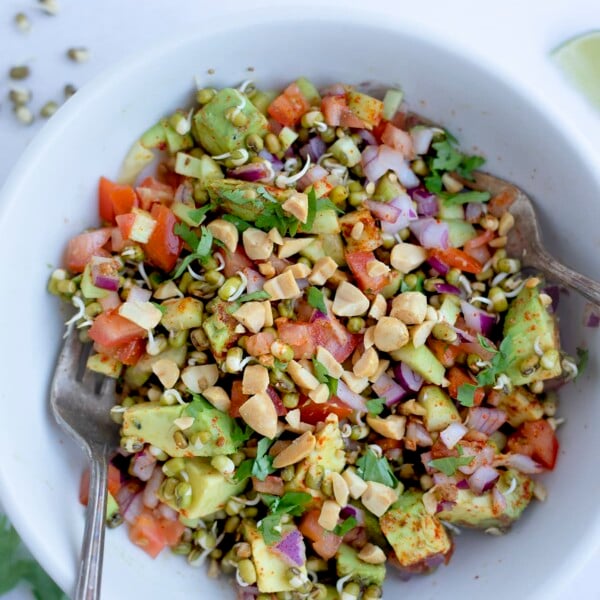
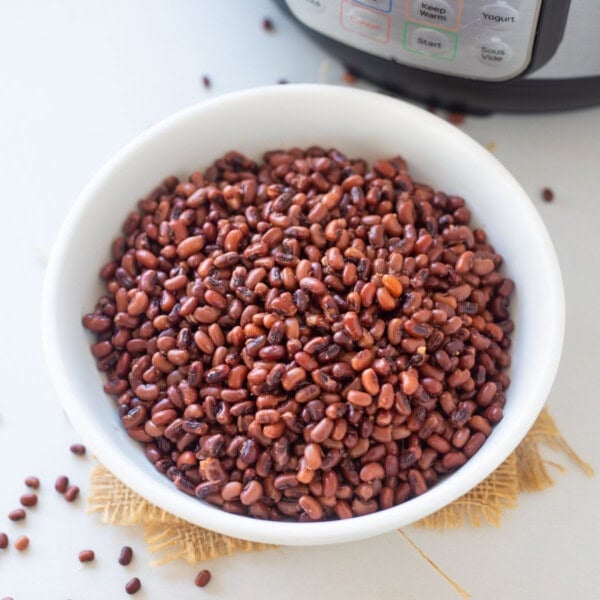
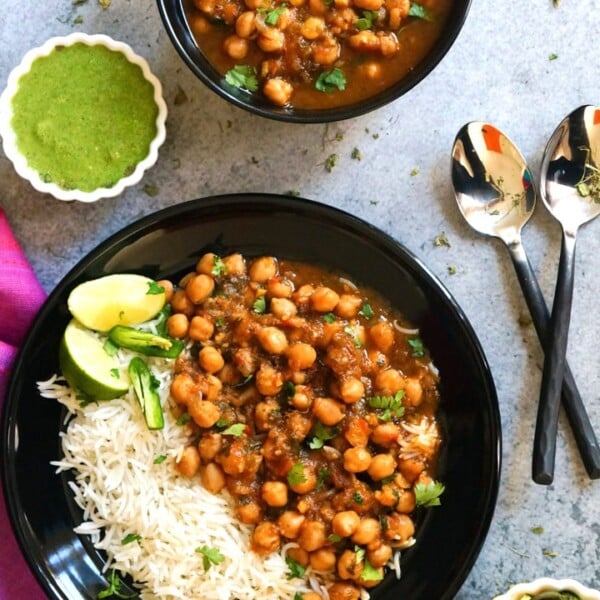
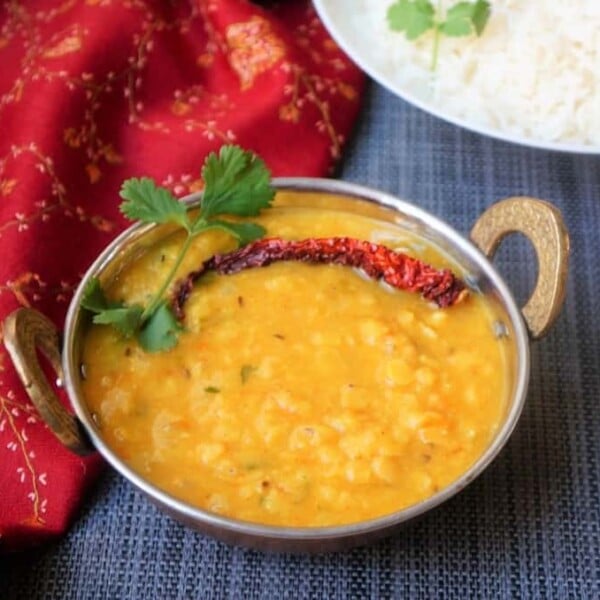
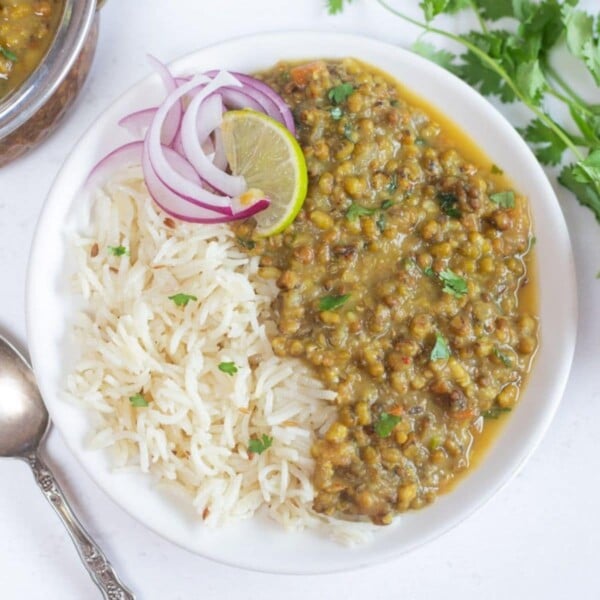
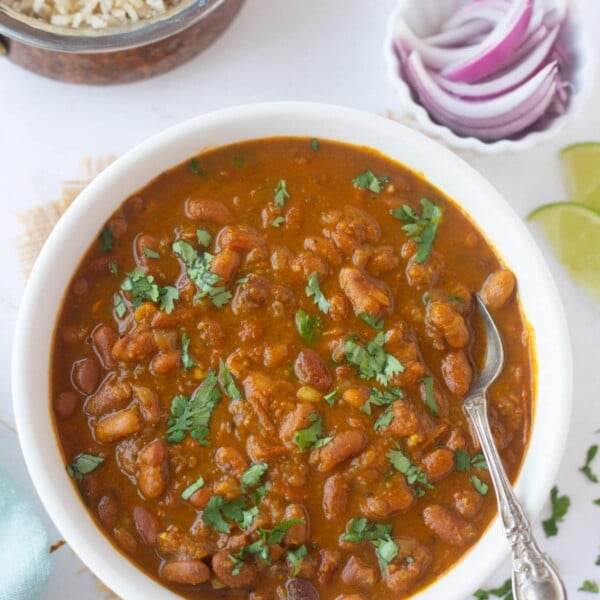








The beans turned out great. I used them in a soup.
Hi Soraya – That sounds delicious! I’m glad the beans turned out well for your soup. 😊